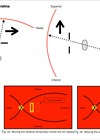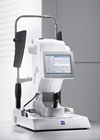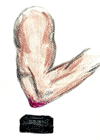This year at the Royal College of Ophthalmologists saw a world’s first for any conference: a slit-lamp grand round. Rather than the conventional presentation of clinical cases via PowerPoint with the occasional clinical image thrown in for good measure, this session, which took place on Wednesday 24 May during Congress, saw six patients come up on the stage and tell their story to the audience before being examined live on stage. Their examination was undertaken with a 3D slit-lamp camera system with the audience wearing 3D glasses to experience the 3D effect.
Having just finished my undergraduate degree in medicine, I am used to attending grand round sessions in the medical education centre in my local hospital – my colleagues and I would spend an afternoon teaching session talking to and examining patients with, for example, heart failure, examining them and hearing their story.
As an aspiring ophthalmologist, I have had the opportunity to attend several local, national and international conferences but I have never heard of a grand round being done in ophthalmology where patients are examined with the slit-lamp.
The session was incredibly captivating and hearing the patients’ stories and their experience of living with sight loss reminded me of the reason why I want to do ophthalmology, which is an incredibly rewarding career where we are privileged to help our patients to see. I honestly believe that a session run in this way will also help clinicians, including myself, to remember the cases and learn more from them – this certainly seemed to be the feeling of the people sitting around me.
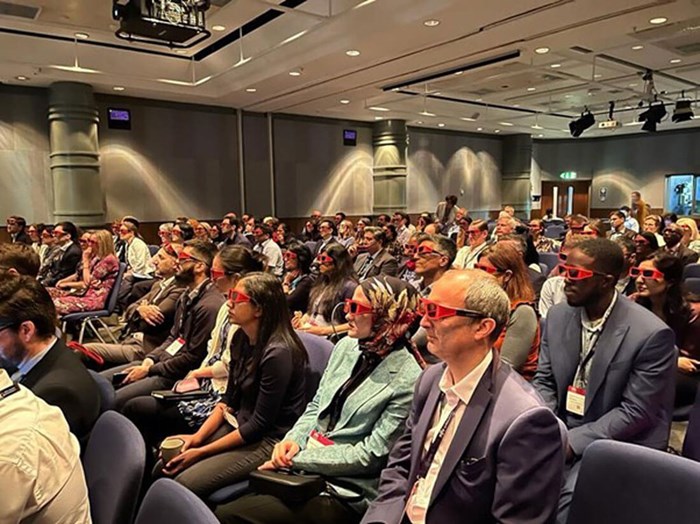
Dr Sunil Mamtora, an NIHR Academic Clinical Fellow at the Bristol Eye Hospital and Clinical Fellow at the Royal College of Ophthalmologists, chaired the session and commented to me: ‘Putting patients at the centre of everything we do is so important. By listening to patients and giving them a voice, it allows us to reflect on why we chose to be ophthalmologists.’
The Sight Loss Council who supported and were involved with the event tweeted how the event was a great example of how advanced technology can be used during eye tests and in training.
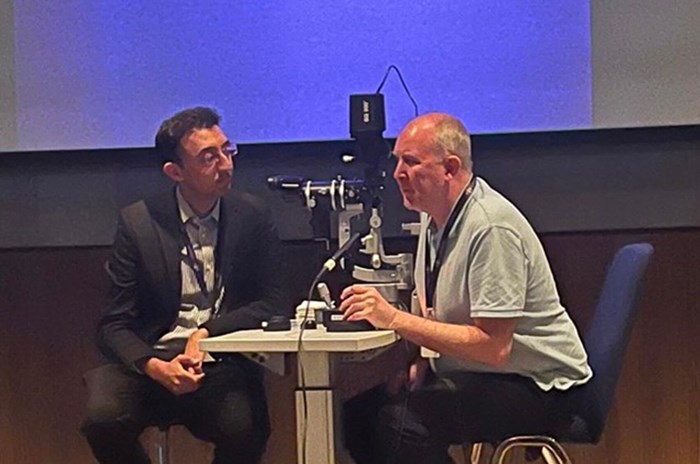
Dr Mamtora also added that: ‘It’s often difficult to learn clinical ophthalmology without examining patients directly and seeing the patient’s eyes on the slit-lamp. When you are starting out or are unfamiliar with a condition or clinical sign it can be hard to know what you are looking at. By using a slit-lamp camera in this way we can highlight the relevant clinical signs so that everyone can learn. 3D technology, which was demonstrated for the first time ever in this session makes the educational experience especially immersive’.
I couldn’t find anything at all regarding 3D slit-lamp camera systems online and reached out to Haag-Streit directly and asked how I could find out more information about the slit-lamp camera system and when it would be available. Frank Wenger, the Head of Product Management General Diagnostics at Haag-Streit, commented: ‘The device used was a BQ 900 slit-lamp with an Imaging Module 910 that was operated as a stereo camera.’
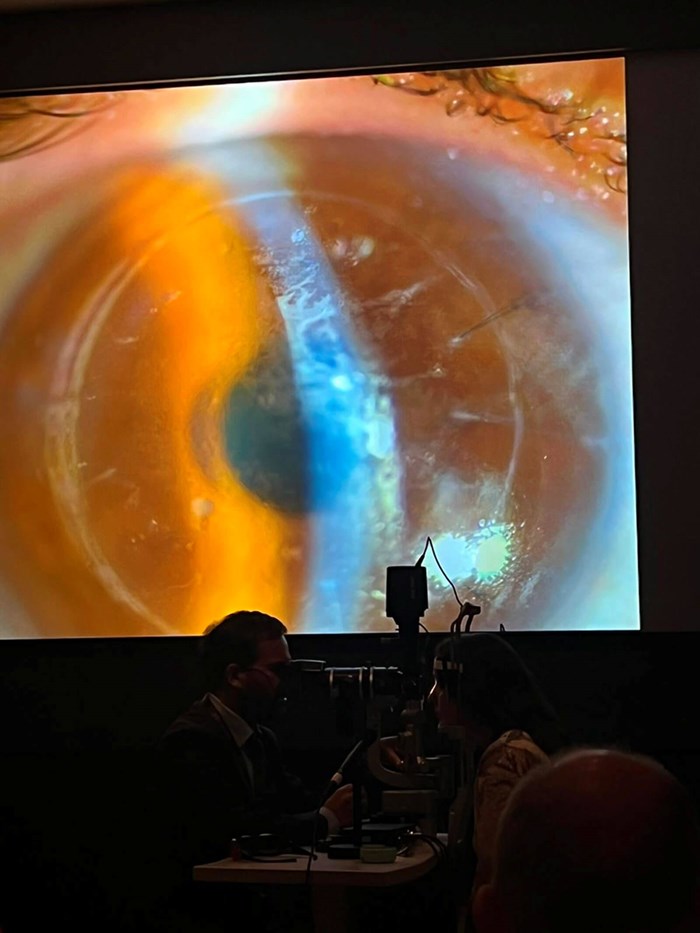
This session was definitely my favourite out of the whole congress and seemed to be for many others in the audience, too. Iain Livingstone, a consultant ophthalmologist from Forth Valley, Glasgow commented: ‘Ophthalmology meets IMAX’.
Having patients at the centre of the session was the best part. This was powerful and hearing their stories inspires me further to pursue a career in ophthalmology. I also enjoyed the immersive 3D experience, too, and imagine it to be a useful tool for medical education but also potentially tele-ophthalmology and other applications. Here’s hoping for many more slit-lamp grand rounds to come!

